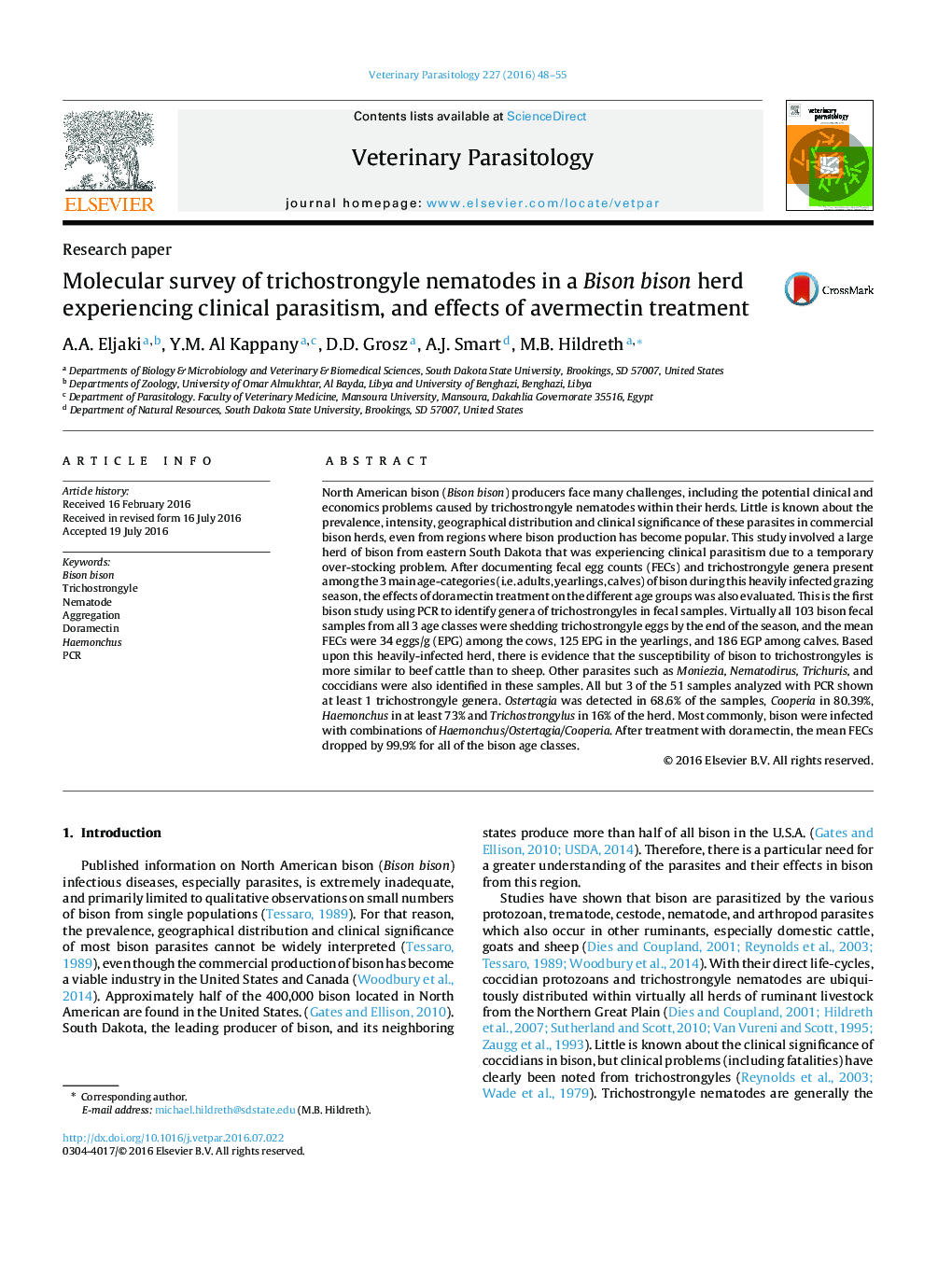| کد مقاله | کد نشریه | سال انتشار | مقاله انگلیسی | نسخه تمام متن |
|---|---|---|---|---|
| 5802077 | 1555649 | 2016 | 8 صفحه PDF | دانلود رایگان |

- Clinical parasitism was observed in a bison herd experiencing a temporary over-stocking problem and heavily infected with trichostrongyle nematodes.
- Based upon egg output, bison susceptibility to trichostrongyles appears to be more similar to beef cattle than to sheep.
- Egg output was highest and least aggregated in the calves and lowest and most aggregated in cows.
- Over 80% of the samples tested contained Cooperia eggs, and over 70% contained Haemonchus eggs. Ostertagia was detected in just under 70% of the samples, and Trichostrongylus eggs in 16% of the herd.
- Treatment with doramectin dropped fecal egg counts by 99.9% in all age classes of bison.
North American bison (Bison bison) producers face many challenges, including the potential clinical and economics problems caused by trichostrongyle nematodes within their herds. Little is known about the prevalence, intensity, geographical distribution and clinical significance of these parasites in commercial bison herds, even from regions where bison production has become popular. This study involved a large herd of bison from eastern South Dakota that was experiencing clinical parasitism due to a temporary over-stocking problem. After documenting fecal egg counts (FECs) and trichostrongyle genera present among the 3 main age-categories (i.e. adults, yearlings, calves) of bison during this heavily infected grazing season, the effects of doramectin treatment on the different age groups was also evaluated. This is the first bison study using PCR to identify genera of trichostrongyles in fecal samples. Virtually all 103 bison fecal samples from all 3 age classes were shedding trichostrongyle eggs by the end of the season, and the mean FECs were 34 eggs/g (EPG) among the cows, 125 EPG in the yearlings, and 186 EGP among calves. Based upon this heavily-infected herd, there is evidence that the susceptibility of bison to trichostrongyles is more similar to beef cattle than to sheep. Other parasites such as Moniezia, Nematodirus, Trichuris, and coccidians were also identified in these samples. All but 3 of the 51 samples analyzed with PCR shown at least 1 trichostrongyle genera. Ostertagia was detected in 68.6% of the samples, Cooperia in 80.39%, Haemonchus in at least 73% and Trichostrongylus in 16% of the herd. Most commonly, bison were infected with combinations of Haemonchus/Ostertagia/Cooperia. After treatment with doramectin, the mean FECs dropped by 99.9% for all of the bison age classes.
Journal: Veterinary Parasitology - Volume 227, 30 August 2016, Pages 48-55